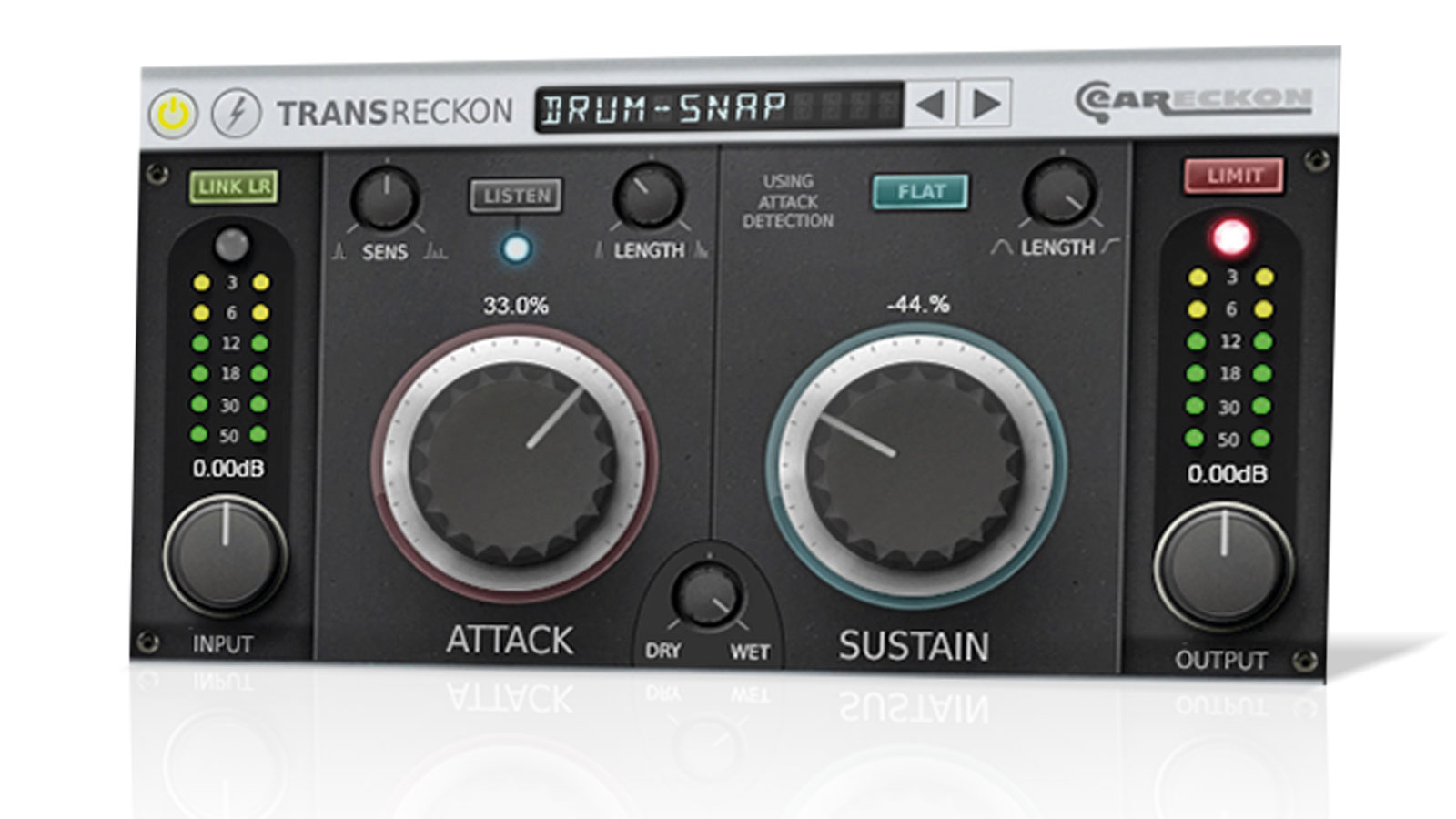MusicRadar Verdict
One of the finest transient shapers we've seen/heard, TransReckon works wonders on drums and other transient-heavy sounds.
Pros
- +
Easy to use. Versatile dynamics control. Unlink stereo channels. Useful 'listen' function. Parallel processing. Built-in brickwall limiter.
Cons
- -
Vague metering.
MusicRadar's got your back
TransReckon is described by eaReckon as a "transient processor", and it falls into the category of dynamics processor that you will have previously seen referred to as a transient or envelope designer, shaper or modulator.
Such tools are pretty commonplace (and included with most DAWs these days) but perhaps less appreciated or understood than their distant cousins, compressors.
TransReckon's operation is centred on two main knobs, Attack and Sustain, the first of which is turned up or down to increase or decrease the amplitude level of the transient peaks in a signal.
"TransReckon is a beautifully realised dynamics processor"
It's supremely easy to put TransReckon to work adding definition to any percussive part: simply push the Attack knob up and you'll hear even its quieter transients start to leap out. Conversely, lowering the Attack does a great job of softening harsh, spiky transients that might be too forward in the mix.
You can do something similar with a limiter or compressor, but TransReckon (like any transient shaper) works its magic without the use of a static, fixed threshold control.
The effect instead detects transients by measuring the rate and amount of level increases, so the detection algorithm is capable of latching on to all transients (depending on the Sensitivity knob settings), no matter what their absolute levels.
The Sustain knob determines how much the post-transient decay is boosted or attenuated, letting you increase or decrease the tail level of drums, guitars, basses and other percussive or 'plucky' sounds.
The 'Reckoning
So far, it's all standard transient shaping fare, then. One control that sets TransReckon apart from most of the competition, though, is the Length knob, of which there are two: one each in the Attack and Sustain sections.
The Attack Length increases or reduces the duration of the transient processing, enabling you to dial in anything from massive, meaty impact (using a long Length) to delicate, refined transient snap (short Length).
The Sustain Length does the same, but targeting the effect for the tail. This works particularly well on drum overheads, being quite similar to heavy compression, but sounding different in that every hit becomes big and explosive - again, because there's no fixed threshold.
Another 'non-standard' setting is the Link LR button. When this is deactivated, TransReckon works on the left and right channels independently - eg, for softening transients on just one side.
TransReckon also features a Dry/Wet mix knob, so you can pull in some of the dry signal to keep things under control or achieve results similar to parallel compression. And, as you'd hope, there's a built-in brickwall limiter, too, for preventing excessively loud transients jumping wildly into clipping category.
TransReckon is a beautifully realised dynamics processor that gives you the ability to get into the nitty gritty of your transients and process percussive material in ways that you just can't using other tools.
It works well, it's easy to put into action and it sounds fantastic. You can quite easily go too far with it, and it won't replace your favourite compressor, but when you need a high level of transient control, it's a definite winner.
Computer Music magazine is the world’s best selling publication dedicated solely to making great music with your Mac or PC computer. Each issue it brings its lucky readers the best in cutting-edge tutorials, need-to-know, expert software reviews and even all the tools you actually need to make great music today, courtesy of our legendary CM Plugin Suite.
“Chinese Democracy was a boring record. But calling it Guns N' Roses was not honest. It was totally a solo record”: GN’R’s ex manager takes aim at Axl Rose
“Instead of labouring over a perfect recreation, we decided to make an expanded counterpart”: Chase Bliss teams up with Mike Piera for Analog Man collab based on the legendary King Of Tone
“It’s about delivering the most in-demand mods straight from the factory”: Fender hot-rods itself as the Player II Modified Series rolls out the upgrades – and it got IDLES to demo them











